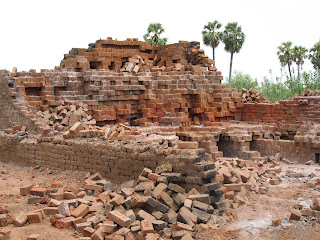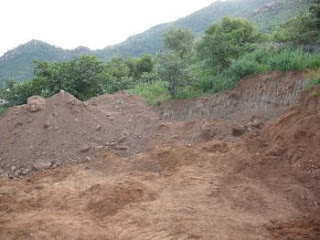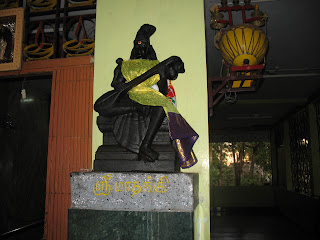 A Bonnet Macaque Monkey
A Bonnet Macaque MonkeyMonday was a sad day for me, because it was a day in which I saw a monkey die. But although the day was sad it was also beautiful because the bonnet macaque monkey experienced the love of many in its final moments – should we all be so fortunate to meet our end in such a light-filled way. What happened was this, at the Tamil Nadu Housing Estate, some kind but careless person coaxed a monkey out of a tree with the offer of a banana. This was a good and loving thing to do, unfortunately the person did not pay attention to what was happening close by because as soon as the monkey came for the banana – it was set upon by seven street dogs. Monkeys and dogs are bitter enemies mainly because they are food rivals – so you often see clashes and confrontations between them. Anyhow, the folk at the Housing Estate had to vigorously thrash the dogs with sticks to get them off the monkey – but sadly the bonnet macaque was seriously injured.
The monkey was taken to the Animal Shelter where the vets sewed up the monkey’s wounds, gave it antibiotics and pain killers and then put it in a large cage to sleep and recover.
The next day the vets were feeling optimistic that the monkey was going to make a quick recovery. When I arrived at the Animal Shelter, I witnessed most everyone who works there, hanging around outside the cage calling out encouraging words to the monkey. A couple of resident dogs at the shelter were happy to lie outside the cage and the monkey, in spite of its recent traumatic experience with the pack of seven street dogs, didn’t seem to be worried that he had some nice, new canine friends hanging around outside his cage keeping him company.
Shanti, a woman who loves all animals and works at the Shelter brought a bowl of milk for the monkey and some nice, fresh, juicy papaya. The monkey drank his milk and was hand fed his fruit and then lay down. Suddenly it got up and started to move about restlessly. It stood in its cage looking out at his numerous supporters like it was trying to talk and tell us what the problem was. All of us there started to encourage him by calling out, ‘What’s the problem monkey? Tell us what the problem is?’ It was so frustrating for us not to understand, because the monkey kept opening its mouth making guttural noises almost like it was trying to communicate some kind of message to us, but we didn’t understand what it wanted to say. ‘Come on monkey – what’s the problem?’ It tried and we couldn’t figure it out and all of a sudden the monkey slumped to the bottom of the cage and died. Immediately one of the vets arranged for the the cage to be moved into the examination room. Whereupon it was opened and the monkey taken out and the vet frantically tried to resuscitate it. But nothing worked and the monkey remained inert and dead.
Everyone at the Shelter was upset as the monkey had made many friends in the short time it had been there. It was a male, very gentle, elderly (around 20 years old), had really bad teeth, and was obviously socialised as it absolutely no fear of people. Sadly the monkey died because a well meaning, kind person gave it food in an inappropriate manner. So please if you are visiting Tiruvannamalai – where there are many monkeys in the town, on the Hill and on the hillround roadway remember a few tips.
Dogs and monkeys are not friends. Be aware if there are dogs around.
Don’t throw food onto the road – otherwise monkeys lose their fear of the road and of traffic. So always throw the food away to the sides of the road.
As adorable as monkeys are, don’t get too close to them. For the monkeys’ health it is better for them to be less friendly and more suspicious of people as there are bad people around who work for the exotic pet industry or for animal testing laboratories who try and steal monkeys or even kill the mother and take the baby.
Monkeys like things besides bananas – if you really want to give a monkey some nice treats – give it some carrots, crunchy vegetables, seeds or nuts.



















































